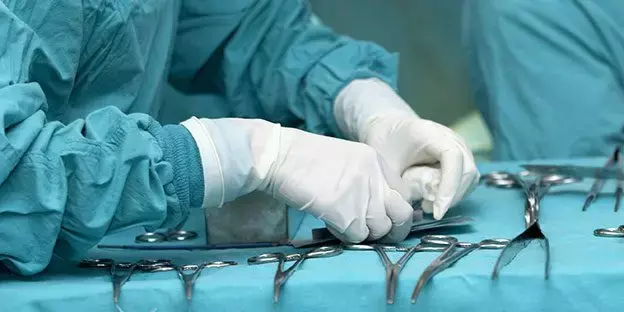- Home
- Medical news & Guidelines
- Anesthesiology
- Cardiology and CTVS
- Critical Care
- Dentistry
- Dermatology
- Diabetes and Endocrinology
- ENT
- Gastroenterology
- Medicine
- Nephrology
- Neurology
- Obstretics-Gynaecology
- Oncology
- Ophthalmology
- Orthopaedics
- Pediatrics-Neonatology
- Psychiatry
- Pulmonology
- Radiology
- Surgery
- Urology
- Laboratory Medicine
- Diet
- Nursing
- Paramedical
- Physiotherapy
- Health news
- Fact Check
- Bone Health Fact Check
- Brain Health Fact Check
- Cancer Related Fact Check
- Child Care Fact Check
- Dental and oral health fact check
- Diabetes and metabolic health fact check
- Diet and Nutrition Fact Check
- Eye and ENT Care Fact Check
- Fitness fact check
- Gut health fact check
- Heart health fact check
- Kidney health fact check
- Medical education fact check
- Men's health fact check
- Respiratory fact check
- Skin and hair care fact check
- Vaccine and Immunization fact check
- Women's health fact check
- AYUSH
- State News
- Andaman and Nicobar Islands
- Andhra Pradesh
- Arunachal Pradesh
- Assam
- Bihar
- Chandigarh
- Chattisgarh
- Dadra and Nagar Haveli
- Daman and Diu
- Delhi
- Goa
- Gujarat
- Haryana
- Himachal Pradesh
- Jammu & Kashmir
- Jharkhand
- Karnataka
- Kerala
- Ladakh
- Lakshadweep
- Madhya Pradesh
- Maharashtra
- Manipur
- Meghalaya
- Mizoram
- Nagaland
- Odisha
- Puducherry
- Punjab
- Rajasthan
- Sikkim
- Tamil Nadu
- Telangana
- Tripura
- Uttar Pradesh
- Uttrakhand
- West Bengal
- Medical Education
- Industry
Peri-mammary artery flaps are useful in breast-conserving surgery in patients with small or medium-sized breasts

Peri-mammary artery flaps useful in breast-conserving surgery in patients with small or medium-sized breasts suggests a new study published in the BMC Surgery
Volume replacement is one of the vital techniques of oncoplastic surgery (OPS) when applying breast-conserving surgery. The clinical application of peri-mammary artery perforator flaps for this indication is uneven in China. Here, we describe the results of our clinical experience with peri-mammary artery flaps for partial breast reconstruction.
In this study, 30 patients underwent partial breast resection for quadrant breast cancer followed by partial breast reconstruction with peri-mammary artery perforator flaps, which included the thoracodorsal artery perforator flap (TDAP), anterior intercostal artery perforator flap (AICAP), lateral intercostal artery perforator flap (LICAP), and lateral thoracic artery perforator flap (LTAP). All the patients’ operation plans were discussed comprehensively and were performed by sticking to every step. The satisfaction outcome was assessed with the extracted version of the BREAST-Q version 2.0, Breast Conserving Therapy Module Preoperative and Postoperative Scales both preoperatively and postoperatively.
Results
According to the study outcomes, the mean flap size was 5.3*4.2*2.8 cm
The mean surgical time was 142 min (100–250 min).
No partial flap failure was detected, and no severe complications were observed.
Most patients were satisfied with the outcomes regarding the dressing, sexual life, and breast shape postoperation.
Furthermore, the sensation of the surgical area, scar satisfaction, and recovery state gradually improved.
Overall, LICAP and AICAP had higher scores when different flaps were compared.
Based on this study, they found that peri-mammary artery flaps had significant value in breast-conserving surgery, especially in patients with small or medium-sized breasts. Perforators could be detected by vascular ultrasound before the operation. More than one perforator could be found most of the time. No severe complications occurred when performing a suitable plan, including discussing and recording the operation procedure; the focus of care, the choice for precise and proper perforators, and the mechanism for hiding the scars were all considered and recorded in a specific chart. Patients were satisfied with the reconstruction technique of peri-mammary artery perforator flaps after breast-conserving, and the satisfaction of AICAP and LICAP was higher. In general, this technique is suitable for partial breast reconstruction and has no negative impact on patient satisfaction.
Reference:
Shen, M., Xu, Y., Wu, Z. et al. Partial breast reconstruction of 30 cases with peri-mammary artery perforator flaps. BMC Surg 23, 41 (2023). https://doi.org/10.1186/s12893-023-01937-4
Dr. Shravani Dali has completed her BDS from Pravara institute of medical sciences, loni. Following which she extensively worked in the healthcare sector for 2+ years. She has been actively involved in writing blogs in field of health and wellness. Currently she is pursuing her Masters of public health-health administration from Tata institute of social sciences. She can be contacted at editorial@medicaldialogues.in.
Dr Kamal Kant Kohli-MBBS, DTCD- a chest specialist with more than 30 years of practice and a flair for writing clinical articles, Dr Kamal Kant Kohli joined Medical Dialogues as a Chief Editor of Medical News. Besides writing articles, as an editor, he proofreads and verifies all the medical content published on Medical Dialogues including those coming from journals, studies,medical conferences,guidelines etc. Email: drkohli@medicaldialogues.in. Contact no. 011-43720751


